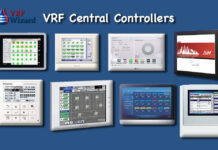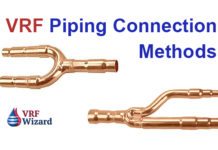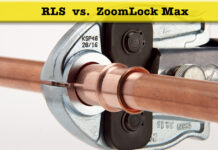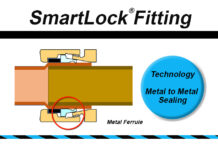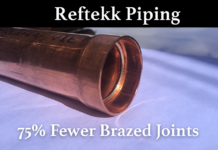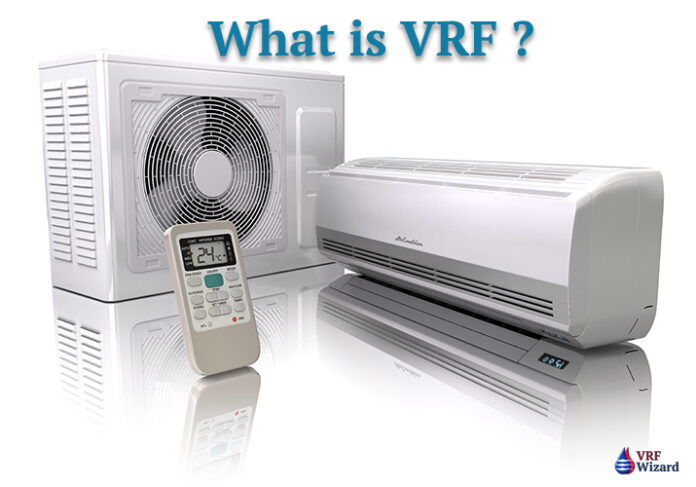VRF Wizard provides all information about Variable Refrigerant Flow (VRF) technology. We cover everything you need to know about installation, cost estimation, project tracking concerning VRF systems. Continue reading to learn what a VRF system is all about.
A VRF system offers long-term energy savings as well as reliable and customizable thermal comfort. Many are hesitant to shift their cooling or heating systems from traditional HVAC systems to VRF systems because of high upfront costs. However, the benefits of VRF systems outweigh their initial costs. Compared to a traditional HVAC system, a VRF system can achieve an average of 20% to 30% energy reduction. This is because a VRF system is capable of partial load and variable speed operation, good zoning control, and heat recovery.
What is a Variable Refrigerant Flow System, and How Does It Work?
A VRF system consists of multiple indoor units and a single outdoor heat exchanger assembly that serves as a condensing unit. This system can function as a heat pump or a heat recovery system. The outdoor unit has compressors with inverter-driven fans that allow for variable supply and control of the refrigerant to the indoor units. Unlike the conventional HVAC system, which uses air or chilled water as the heat transfer fluid, VRF uses refrigerant to provide direct and precise temperature control of various zones. The amount of refrigerant supplied by the compressor to the indoor units depends on the cooling or heating demand of the zones being serviced. VRF indoor units have temperature sensors that signal the adjustment of compressor speed, varying the refrigerant flow rate to match the required heating or cooling load of various zones.
Types of Variable Refrigerant Flow Systems
There are two types of VRF systems: two-pipe systems and three-pipe systems.
- Two-Pipe Systems. These systems are usually used in heat pump applications where heating or cooling only is required. They have branch-circuit controllers that facilitate the separation of the liquid and vapor forms of the refrigerant, supply of superheated vapor to various zones during the heating mode, supply of subcooled liquid to various zones when in cooling mode, and distribution of heat from one zone to another.
- Three-Pipe Systems. These systems can provide simultaneous heating and cooling, which are also referred to as heat recovery systems. They consist of a refrigerant liquid line, a refrigerant vapor suction line, and a high-pressure/low-pressure mixture line. They use branch selectors instead of branch-circuit controllers to supply superheated vapor to heating zones and subcooled liquid to cooling zones.
Codes and Standards Used as Basis of Variable Refrigerant Flow System
- ASHRAE Standard 15 & 34. ASHRAE Standard 15 states that a VRF system is at risk of refrigerant leaking to the occupied space, making it under the category of a high-probability system. Thus, a VRF system should be carefully designed based on the occupancy classification for the rooms, room volume, and the total amount of refrigerant in the system. Furthermore, according to ASHRAE Standard 34, R-410A, the refrigerant used in VRF systems can displace oxygen. Therefore, setting the maximum refrigerant concentration limit to 26 lbs/1000 ft3 of room volume for occupied spaces.
- AHRI 1230. This standard establishes that the IEER serves as the measure of the cooling capacity in terms of Btu/W-hr. IEER is equal to the summation of four part-load conditions, as given by the following equation:
IEER = (0.02 x A) + (0.617 x B) + (0.238 x C) + (0.125 x D), where:
A = EER at 100% net capacity at AHRI standard conditions (95°F)
B = EER at 75% net capacity at reduced ambient (81.5°F)
C = EER at 50% net capacity at reduced ambient (68°F)
D = EER at 25% net capacity at reduced ambient (65°F)
- ASHRAE 90.1. This standard serves as the basis of optimized energy performance and is used in acquiring LEED certification.
Applications of Variable Refrigerant Flow Systems
Heat pumps are typically used in churches, lobbies, retail stores, or restaurants where simultaneous cooling and heating are not required. On the other hand, heat recovery systems are often used in office buildings, residential and apartments, hotels, schools, or assisted living facilities where simultaneous cooling and heating are needed.


